In 2015, we started to deconstruct the logo as part of our brand development. The school colours were agreed in 1961. They are blue, silver and red. The blue and silver represents the sea around Te Atatu Peninsula. The emblem of a Kotuku represents the local area (Kotuku were often seen in the tidal estuary adjacent to Te Atatu Peninsula – and the school is on Kotuku Street). It is also a symbol of prestige, purity and uniqueness. One of the greatest compliments among Māori is to liken someone to Kotuku for it signifies everything rare and beautiful.
The school motto is “Tohea” shortened from “Tohea, tohea ko te tohe o te kai” which means “Strive, strive as you would strive for food”. When the Rutherford College logo was developed, the school colour of red was incorporated over blue to represent dawn over the water. Te Atatu means “the dawn” and Te Atatu Peninsula looks out across Waitemata Harbour to Auckland City in the dawn of each morning. Fitting symbolism for students starting out on their journey to adulthood.
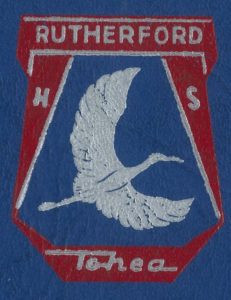
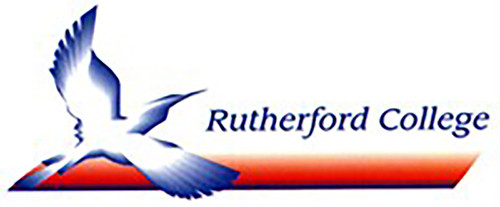

The School was established and was named after a famous New Zealander Lord Ernest Rutherford.
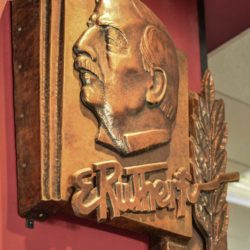
The school opened on 5 February 1961 with a roll of 154 third form students and a staff of nine.

The first major prize-giving ceremony was held in 1962.
Followed later in the year with a luncheon for some of those who had given particular help to the school which was to become an annual tradition.
The school participated for the first time in Inter-Secondary Competitions in Rugby, Basketball (Netball), Hockey and Soccer.
The guest speaker for our first Rutherford Day was Sir Ernest Marden who worked with Lord Rutherford.
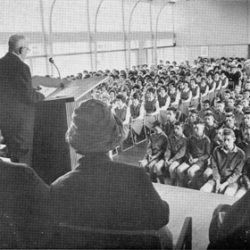
In April 1964 a Queen Carnival was held to raise funds for the swimming pool. The total sum raised was £4000 with a further £700 raised at the Gala Day.
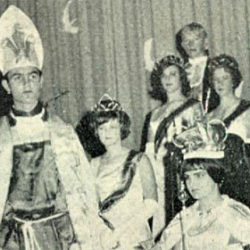
Sir Walter Nash was the guest speaker for Rutherford Day. He was the 27th Prime Minister of New Zealand and continued to serve as a Member of Parliament until his death in 1968 – just three years after his address at Rutherford College.
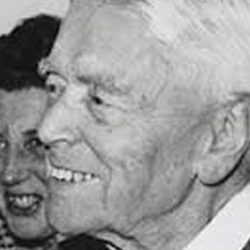
The swimming pool was in use towards the end of 1966.
Rutherford Day saw many distinguished guests including the Minister of Education, the Acting District Inspector and representatives from the Hobsonville Air Base. The guest speaker was Sir Edmund Hillary who spoke on the qualities needed for leadership – courage, humour and determination.
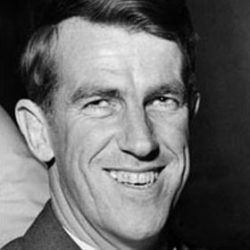
Staff and pupils were very excited to move into the new library building – 3,100 sq feet with carpeted floors, acoustic tiles – featuring a mezzanine floor.
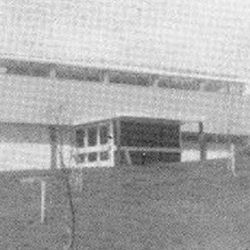
Delays in opening the new Massey High School, Rutherford found itself with 1,510 pupils – the first school in New Zealand to exceed 1,500 – in just its 7th year of operation.
The first school council was formed with a dozen enthusiastic students that met to gather suggestions, draw up a constitution and organise elections for Term 1 1969. During the year they helped organise socials.
The first school ball was held Friday 22nd August – using the Mikado production from earlier in the year as the theme.
In May 1969, the first gymnasium for Rutherford High School and the Te Atatu Community was ready for use. Fittingly, the boys’ gymnastics team won the Auckland Secondary School Boys Championships in 1969. Indoor basketball teams were soon formed to ensure the gym was fully utilised.
The Maori Culture Group formed in 1970 – meeting after school every Friday. Their first performance was in the School Library followed by a trip to Hillary College.

After smashing the Rutherford swimming records in the new swimming pool, Colin Herring finished his first year at the University of Alabama having received a Scholarship in Swimming. He later swam for NZ in the 1972 Munich Olympic Games.
In 1970, the Upper Sixth form became the 7th form and they were allowed to wear mufti.
In 1972, the Maori Culture Club become the Polynesian Club, hosting a Polynesian evening attended by Mt Roskill Grammar, Lynfield College, Onehunga High and Hillary College.
Sir Dove-Myer Robinson – the Auckland Mayor spoke on Rutherford Day about the role of the scientist and his recent trip to the Stockholm Conference for the Future of the Human Race.

Rutherford High School won first prize in the Senior Physical Experimental Section and the Professor Brigg’s Prize for the most outstanding exhibit in the physical sciences at the 14th Auckland Secondary School Science Exhibition. The design was first proposed by Rodney Scott in 1972, and picked up by Chris Jobson, Derek Snow and Stephen Mathson for the 1973 exhibition.
Rutherford High School was recognised, through its ongoing support of evening classes into what became Community Education, as a Community School. This reinforced the school’s vision that the process of education should be designed to meet the needs of the whole community. In addition, Adult Classes began again during the day. The Photographic Club started in 1974.
The year started with much drama as the Nelson Block (D Block) burnt to the ground in January. Mr Clark stood there for a short time after the building collapsed, then went inside and began planning.
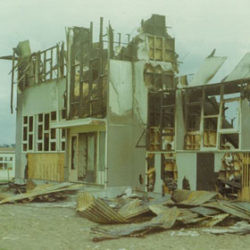
Mr Berridge, foundation staff member, Dean from 1970, Senior Master from 1973, pioneer of the Technical Department, and enthusiastic sports coach, left Rutherford High School to become Deputy Principal at Whangaroa College.
The Polynesian Club competed in the Polynesian Festival for the first time – but were limited to section “B” in the competition. They achieved 2nd Action Song (Hato Petera winning 1st place as an individual), 2nd Poi (Queen Victoria winning 1st place as an individual), 3rd Waiata, 5th Haka.
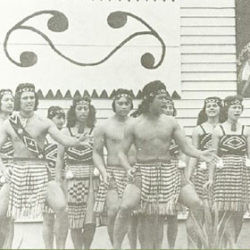
Rutherford High School hosted, and won, the Auckland Polynesian Festival.
Another massive community fundraising effort resulting in the new Sports Hall opening in 1980. This included facilities for 5 badminton courts / 1 full size or 3 practice basketball courts / 3 volleyball courts / indoor soccer / indoor hockey and a weight training bag.
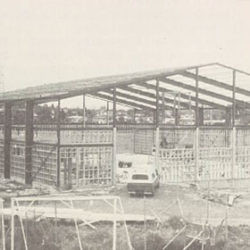
At the 1980 Polynesian Festival (held at Nga Tapuwae College), the team again won the Aggregate Trophy – taking out First Place in the Action Song, First Equal in the Poi and Second Place in the Haka.
The Polynesian Club wins the Auckland Polynesian Festival for the third year in a row.
The Polynesian Club won the Auckland Polynesian festival for the fourth year in a row.
The Boys Soccer 1st XI won the Auckland Championship. Three students selected as Auckland representatives.
The Community Education departments of Massey High School, Rutherford High School and Waitakere College united together under the title of Northwest Community Education – based at Rutherford High School.
His Excellency The Governor General The Rev. Sir Paul Reeves and Lady Reeves opened a Satellite Class of Arohanui Special School at Rutherford High School.
Mr Edmeades began as Principal of Rutherford High School – starting an 18 year term. He was faced with the 1989 education reforms known as Tomorrow’s Schools. These reforms shifted substantial financial and administrative responsibilities for managing schools to elected Boards of Trustees.
Changes in law enables the Special Education Unit to become part of Rutherford High School.
Rutherford won the NZ Secondary Schools Dragon Boat competition at Princess Wharf.
Rutherford High School won the Graham Lowe U15 League Cup – playing in front of ex-students and NZ Rugby League representatives Henry and Robbie Paul.
Rutherford again won the Schools Dragon Boating Competition.
The Rugby League 1st XIII team won the Auckland Plate Final with the U15 team playing in the final.
Being a “Fundholder” school enabled the Special Education Department to become more autonomous and able to offer speech therapy, physiotherapy and occupational therapy to meet the needs of a wider range of students.
The annual Sports Dinner was to honour those students from each sports team who had achieved throughout the year. Awards are made in three categories, Most Valuable, Most Improved and Fair Play – as well as the Sports Person of the Year in each code.
In 1999, the Ministry paid for all of the secondary schools in Waitakere City to be researched – looking for the good, bad and indifferent. Rutherford College came out on top.
Forms change to Years
- 3rd Form became Year 9
- 4th Form became Year 10
- 5th Form became Year 11
- 6th Form became Year 12
- 7th Form became Year 13
The Years generally describe the number of years the student has been at school.
A great visionary Mr Clarke passes away on February 26 2002.
Mr Alan Coughlan arrived at Rutherford High School in 1968 as a Social Studies teacher and moved on to teach various subjects. He later became a Dean, then moved into the Executive team – working with all four principals. After 41 years at Rutherford, he retired in 2009.
This year a fantastic upgrade of the Marae carvings were completed by Ata Rilin and Jackie Taitua.
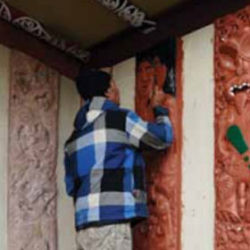
Thanks to the Trusts Charitable Foundation, we were able to install a new timber sprung floor in our Sports Hall, replacing the vinyl on concrete floor that had been in place for 32 years.
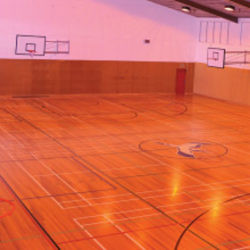
450 ex-Rutherfordians attended the College’s 50th Jubilee. Three Principals (past and current) attended – Mr Cliff Edmeades, Mr Graham Cowley and Mr Gary Moore. Sadly our Foundation Principal Mr Eric Clark passed away in 2002.

Rutherford’s scholarship results were their best ever with three Top Scholars in New Zealand and 26 scholarships.
